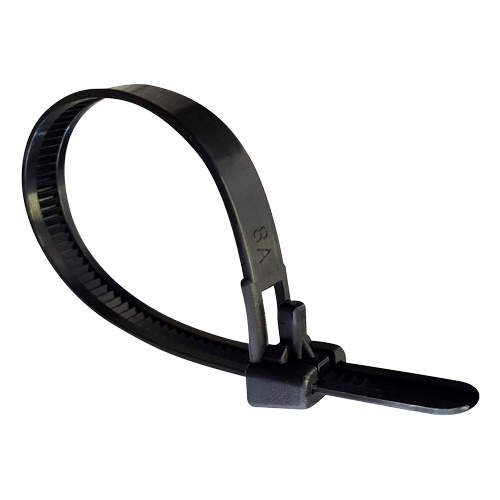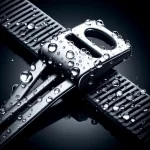Cable ties are essential tools for organizing and securing wires, cables, and other objects in various settings. They offer a quick, easy, and reliable solution for bundling and fastening. We're here to demystify the effects of moisture on cable ties.
We want to shed light on the effects of moisture on these versatile fasteners. Understanding how moisture impacts cable ties will help you make informed decisions when selecting and using them in different environments.
The Hygroscopic Nature of Nylon Cable Ties
Most standard cable ties are made from nylon 6/6, a hygroscopic material that readily absorbs and releases moisture from its surroundings. This property allows nylon cable ties to maintain a certain level of flexibility and toughness, which is crucial for their performance.
When cable ties are manufactured, the molding process can dry out the material, causing stress and brittleness. To counteract this, manufacturers often add 2-3% of the cable ties' weight in water through conditioning, allowing the ties to absorb moisture and regain their flexibility.
Moisture Content and Cable Tie Performance
The moisture content of cable ties directly affects their performance. Freshly molded cable ties contain nearly zero percent moisture, resulting in high tensile strength but potential brittleness. As cable ties absorb moisture from the air, they become more flexible and impact-resistant.
Manufacturers aim to achieve an optimal balance between tensile strength and toughness by conditioning cable ties to reach a moisture content of around 2-3%. This process typically takes about three weeks, ensuring that the cable ties perform at their best.
Effects of Extreme Moisture Conditions

While a certain level of moisture is beneficial for cable ties, extreme moisture conditions can have detrimental effects. In environments with high humidity or direct exposure to water, cable ties may absorb excessive moisture, leading to several issues:
Reduced Tensile Strength
As cable ties absorb more moisture, their tensile strength decreases. This means that the ties may not be able to withstand the same amount of force or load as they would in optimal moisture conditions, potentially leading to failure or breakage.
Increased Flexibility and Stretching
Excessive moisture can cause cable ties to become overly flexible and prone to stretching. This can result in loose or inadequate fastenings, compromising the security of the bundled wires or cables.
Effects of Extreme Dry Conditions
On the other hand, extremely dry conditions can also negatively impact cable ties. When exposed to low humidity or stored in unheated warehouses for extended periods, cable ties may lose their moisture content and revert to their "as molded" state, becoming brittle and prone to breakage.
Dry and brittle cable ties are more likely to snap or crack when flexed or tightened, making them difficult to work with and increasing the risk of failure. This is particularly problematic in outdoor applications or cold-weather environments.
Preventing Moisture-Related Issues
To minimize the effects of moisture on cable ties and ensure optimal performance, consider the following tips:
Proper Storage
Store cable ties in their original packaging until they are ready for use. Keep them in a temperature-controlled environment, ideally around 70°F (21°C) and 50% relative humidity. Avoid storing cable ties in unheated warehouses or exposing them to extreme temperature fluctuations.
Timely Use
Once a package of cable ties is opened, aim to use them within a reasonable timeframe, typically within one year of purchase. This helps prevent the ties from losing moisture and becoming brittle over time.
Inventory Rotation
Implement a "first in, first out" inventory rotation system to ensure that older cable ties are used before newer ones. This reduces the risk of cable ties sitting in storage for too long and losing their optimal moisture content.
Proper Installation
When installing cable ties, avoid over-tightening them. Applying excessive tension can cause the ties to stretch or break, especially if they have absorbed too much moisture. Use the appropriate tools and techniques to achieve a secure but not overly tight fastening.
Wrapping Up
Moisture plays a crucial role in the performance and longevity of cable ties. By understanding the effects of moisture on these essential fasteners, you can make informed decisions when selecting, storing, and using them in various applications.
Remember to store cable ties properly, use them promptly, rotate your inventory, and follow best practices during installation.
By doing so, you can ensure that your cable ties perform optimally and provide reliable fastening solutions.
Check out our website for the best cable tie deals on the market!

